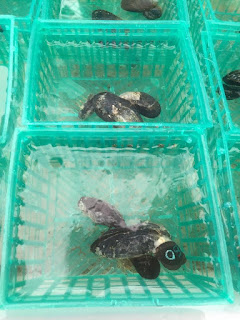The main project for my Kelp Management Extension Fellowship is now complete and publicly available!
The Giant Kelp and Bull Kelp Enhanced Status Report (Kelp ESR for short) is a summary of the ecology, harvest, management, restoration, and information needs for giant and bull kelp throughout California. I started drafting it in summer 2020 with my California Department of Fish and Wildlife (CDFW) colleagues Rebecca Flores Miller and James Ray. It was reviewed by seven external experts and several CDFW supervisors and we finished editing it in December 2021. Then I got to enter it into the California Marine Species Portal where 33 (and counting) other Enhanced Status Reports live! Enhanced Status Reports are updated approximately annually with new harvest or abundance information to help guide Fisheries Management Plans.
The Kelp ESR is unique in that it is the only Enhanced Status Report for an alga (or in this case, two algae). Another cool feature is that it has a special section highlighting dozens of the restoration activities that have taken place over the past several decades to restore kelp habitats throughout California. It also features some hand-drawn diagrams by yours truly!
A sample of one of my hand-drawn diagrams in the Kelp ESR. Source: California Department of Fish and Wildlife 2021.
I am very excited to see this report come out as it represents most of what I've been working on since April 2020. I hope you check it out!
References
California Department of Fish and Wildlife. 2021. Giant Kelp and Bull Kelp, Macrocystis pyrifera and Nereocystis luetkeana, Enhanced Status Report. Contributor(s): Gina Contolini, Rebecca Flores Miller, and James Ray



















